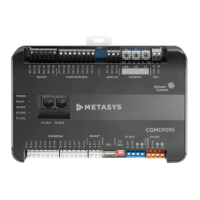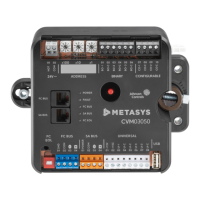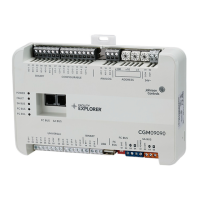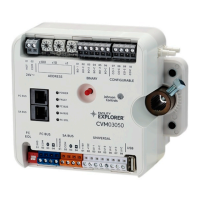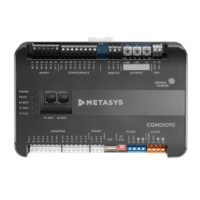CK721-A Installation and Operation Introduction
24-10349-8 Rev. B 1-13
This document contains confidential and proprietary information of Johnson Controls, Inc.
© 2012 Johnson Controls, Inc.
Communication Modes
The P2000 communicates with terminals that provide reader interfaces, input points,
or output relays. Communication is bi-directional. Some messages are sent from the
P2000 server to the field panels, and others are sent from the panels to the server,
and then forwarded to P2000 workstations. The volume of messages across the
communication link depends on the operating mode of the system.
System performance where communication is concerned can be defined as the speed
at which access decisions are made after a card is used. While several factors affect
overall system performance, the most significant factor is the operation mode, which
you can define when programming the system. The P2000 software provides three
operating modes:
Local. In this mode, all access decisions are made by the field panels. This
eliminates the need for panels to communicate with the server every time an
access request is presented at a reader. Local mode provides the best overall
system performance.
Central. This mode is useful when you want to assign access restrictions on a
global scale (throughout the entire system). All access requests are forwarded
to the server for an access grant or deny decision.
Shared. With this mode, access decisions can be made at the panel level or
by the server. Field panels will first search for a card in their memory, as in
Local Mode. If a card’s record is not found at the panel level, the access
request is then forwarded to the Server, as in Central mode. Shared mode is
useful when a panel’s card capacity is exceeded.
More information on the P2000 operating modes is provided in the P2000 Software
User Manual.
CK721-A/P2000 Server Encrypted Communications
This feature provides encrypted network communications between the CK721-A
controller and the P2000 Server, using the Advanced Encryption Standard
(AES256).
The CK721-A Encryption is implemented using the Federal Information Processing
Standards (FIPS) 140-2, validated (Certificate #1051), cryptographic module
(version 1.2.3) from the Open Source Software Institute
(http://www.oss-institute.org).
The following network communications channels are encrypted:
Priority
Upload
Download

